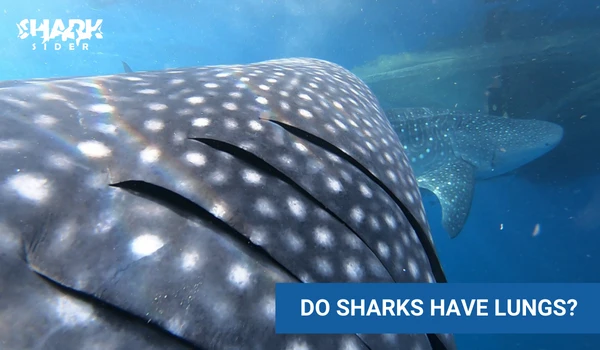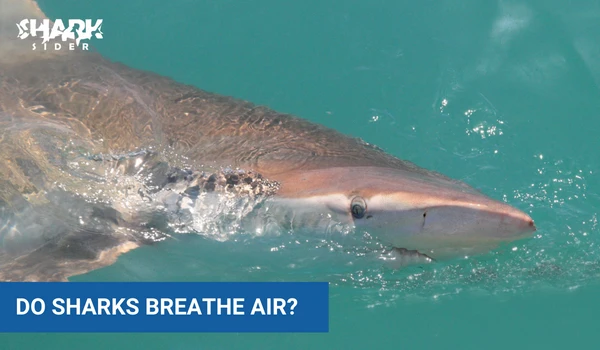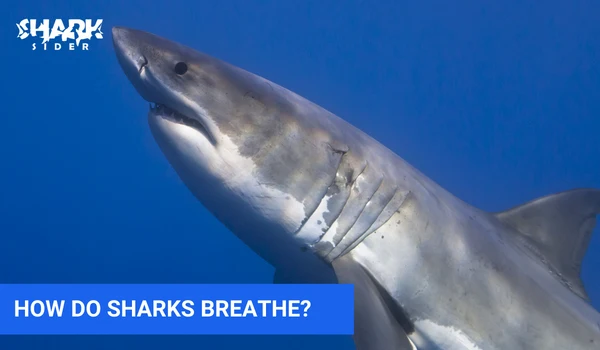Have you ever wondered how sharks can survive while swimming long distances underwater? Although they are ocean-dwellers and completely adapted to living in the sea, it still remains a bit of a mystery as to how sharks breathe. With their pointed noses and powerful fins, these apex predators have not only intrigued humans for centuries but also lived up to their reputation as one of nature’s most formidable hunters. So, let’s explore the fascinating world of shark respiration – from murky depths all the way up to more shallow waters – and discover how do sharks breathe!
How do sharks breathe?
Sharks are able to breathe by using gills. Gills are structures that allow fish and other aquatic animals to absorb the dissolved oxygen from the water. Sharks have five to seven gills located on either side of their head. Each set of gills is made up of a series of tiny plates called filaments, which contain blood vessels that absorb oxygen from the water.
Sharks also take in oxygen through their skin. The skin of a shark is covered in tiny capillaries, which absorb oxygen directly from the water. This process, known as cutaneous respiration, helps the shark to remain oxygenated even when it is resting or swimming slowly.
Do sharks have lungs?

No, sharks do not have lungs as we do. Instead, they rely on a process known as “ram ventilation” to breathe. This process works by constantly forcing water over the gills, which in turn extract oxygen from the surrounding water and then expel carbon dioxide. In essence, this is how sharks are able to stay alive underwater.
How do sharks use ram ventilation?
Sharks use their fins to generate a steady stream of water which is then directed toward their gills. Their large pectoral and dorsal fins act as paddles, driving them swiftly through the ocean while at the same time allowing oxygen-rich water to pass over their gills. As the shark swims, water is drawn into its mouth and then propelled out of its gills. This cycle – known as ram ventilation – ensures that enough oxygen is supplied to the shark’s body in order for it to stay alive underwater.
What other methods do sharks use to breathe?
In addition to ram ventilation, some sharks also use buccal pumping to breathe. This method involves using the shark’s mouth and throat to draw water in and push it over the gills. It is usually used when a shark needs short bursts of oxygen or when it is swimming in shallow waters where ram ventilation may not be as efficient.
Do all sharks use the same method to breathe?
No, different species of sharks may employ different methods of respiration depending on their size and habitat. For example, benthic species use buccal pumping while larger pelagic species rely mainly on ram ventilation. Additionally, some sharks have been found to use a combination of both methods in order to survive in their environment.
Do sharks breathe air?

No, sharks do not breathe air. They obtain all of their oxygen from the water around them using either ram ventilation or buccal pumping. Some species of sharks have also been known to rise up to the surface in order to gulp air, but this is only used as a short-term solution and not for actual respiration.
Conclusion
In conclusion, sharks are some of the most impressive and majestic creatures on earth, and understanding how do sharks breathe can help us appreciate them even more. By using their fins to draw water over their gills, sharks can stay alive underwater for long periods of time. Additionally, some species also use buccal pumping as a way to get extra oxygen when needed. All of these adaptations make sharks one of nature’s most formidable hunters, allowing them to remain in the depths of the ocean for generations.

